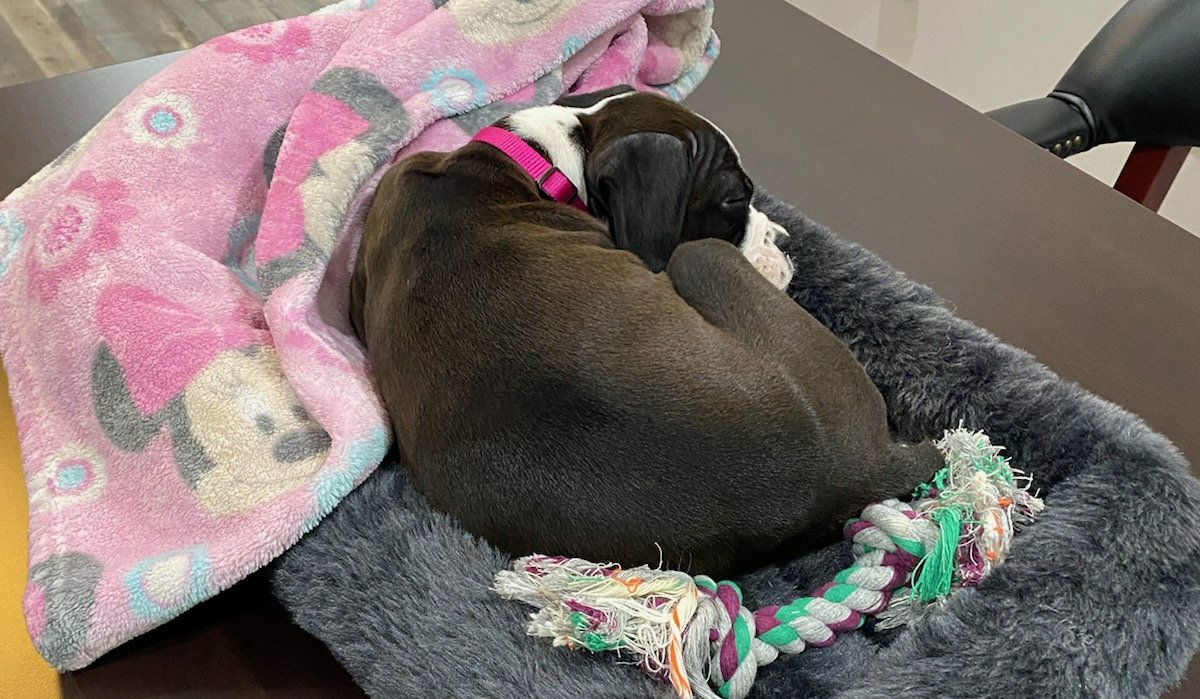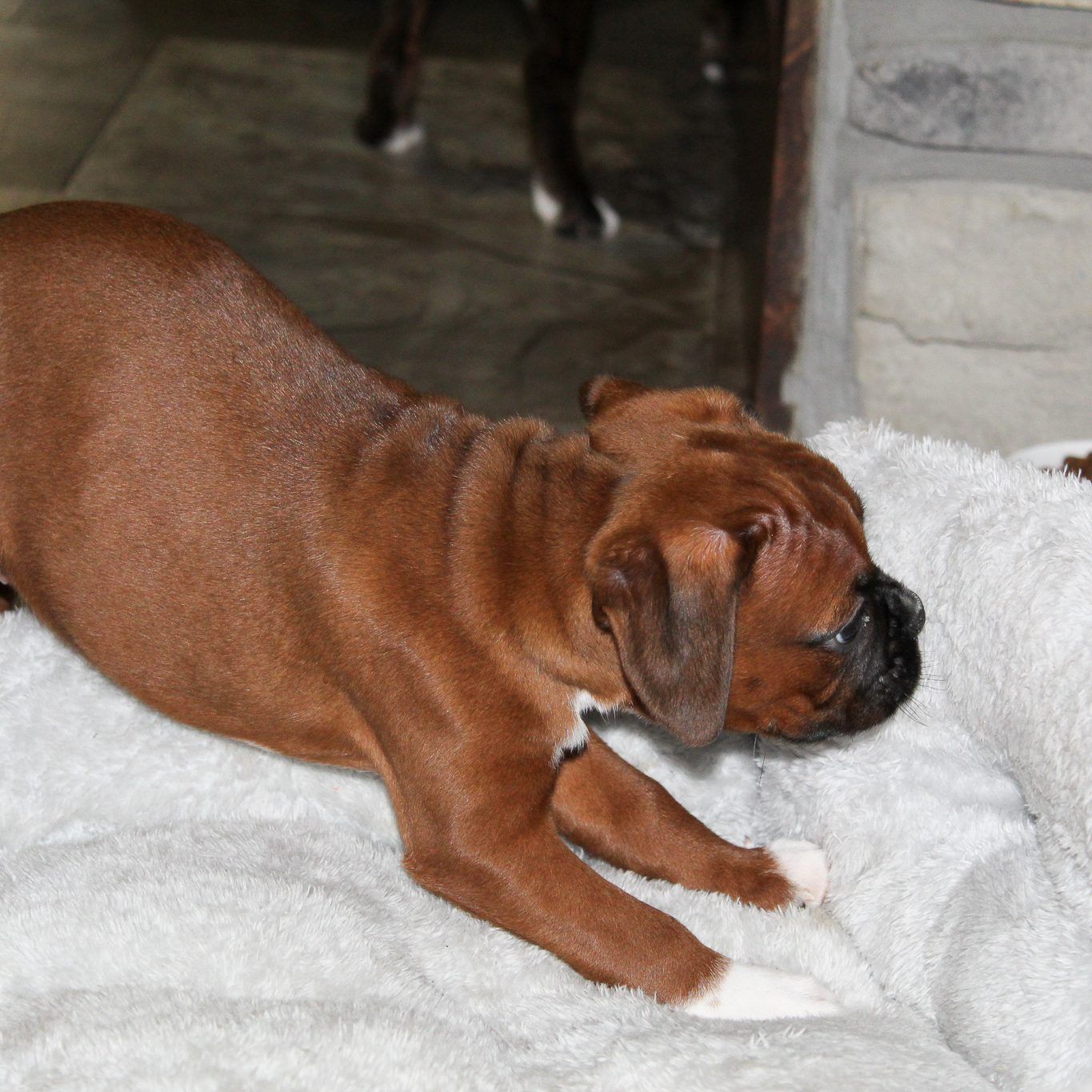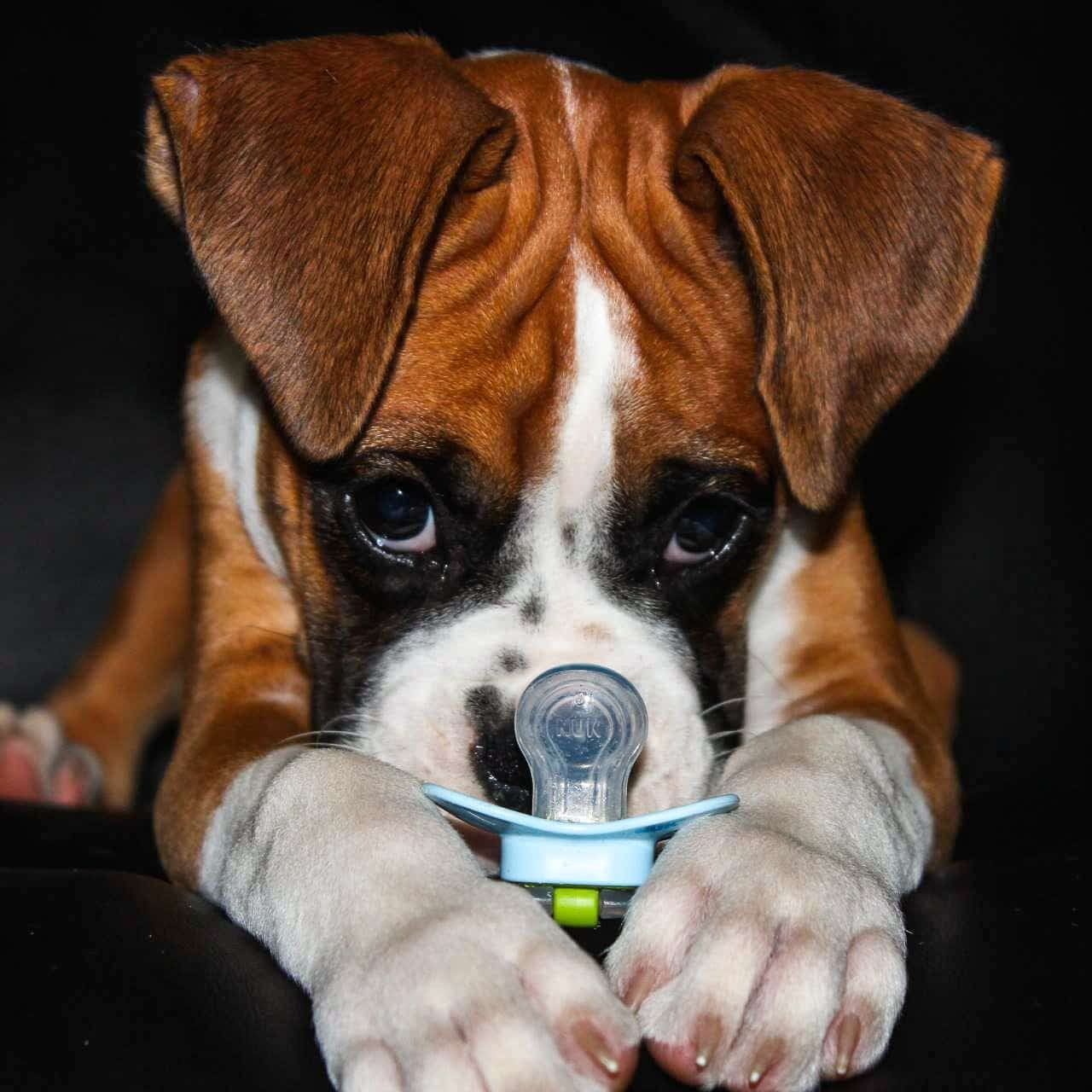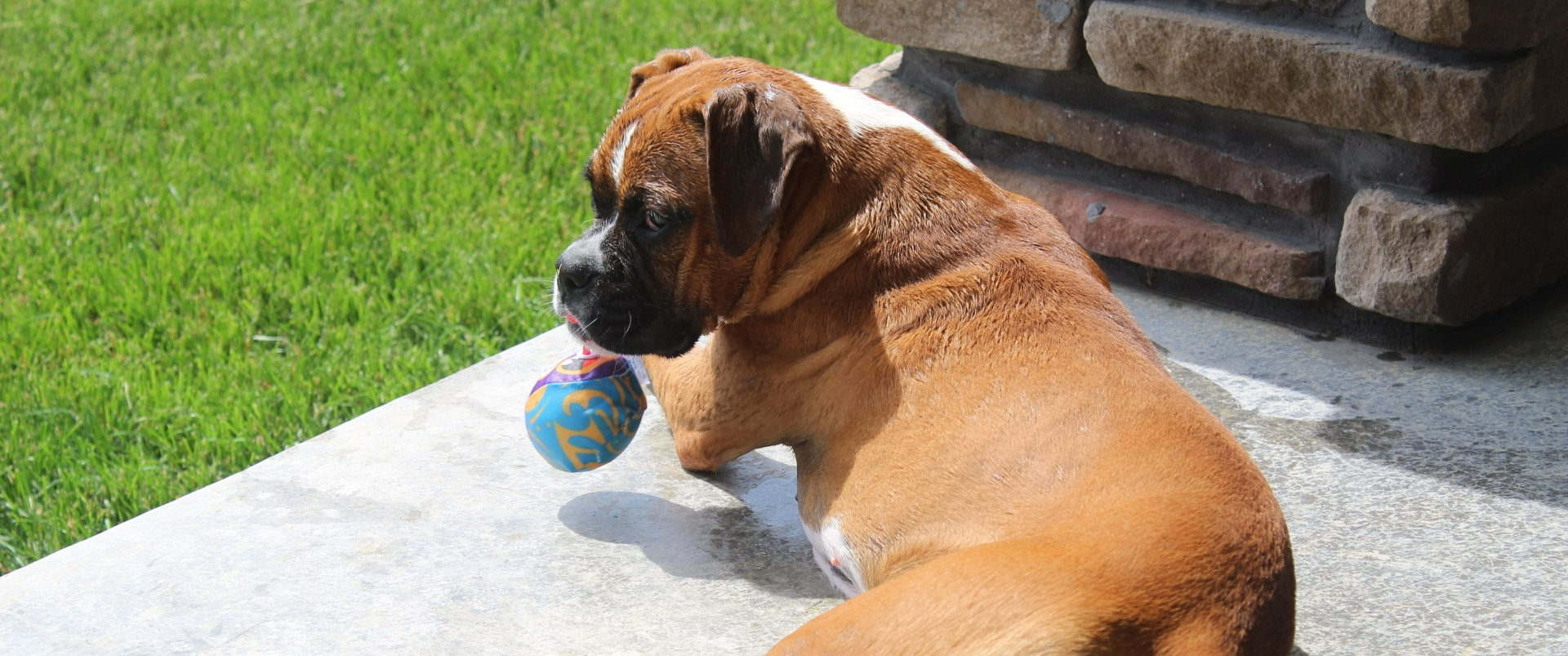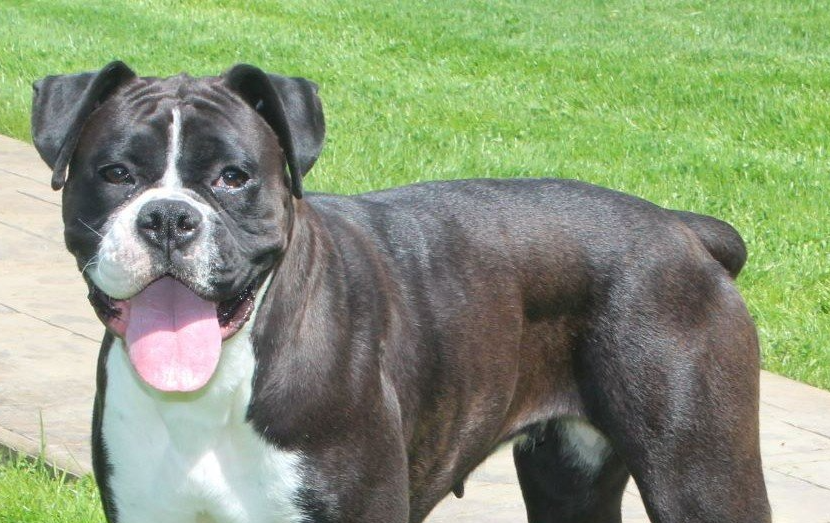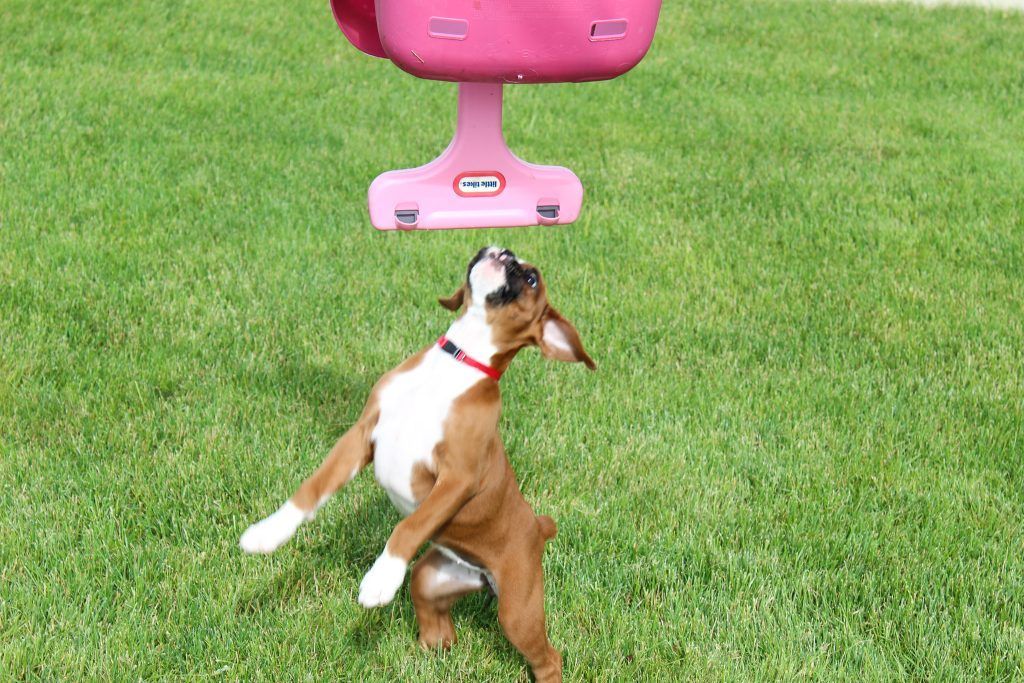EFFECTIVE WAYS TO HOUSE-TRAIN YOUR BOXER DOG
The Basics
The boxer dog is a popular dog breed in the world, especially in the United States of America. In fact, according to the 2013 American Kennel Club statistics, it is the seventh most popular breed in the United States, a spot it has held for four years. Their sturdy and robust physical appearance, coupled with the fact that they are one of the most trustworthy and intelligent breeds, explains why many people are fascinated about them. Specific features such as their sharpness, alertness, agility, meticulousness, suspicion of strangers/intruders have made them a top choice for people looking for guard dogs. This explains why they have been employed for police and military operations.
Now, the richness of the boxer dog temperament is, just like that of most of the other dog breeds, dependent on the level of training it has received. Hence, your boxer dog may not attain his full natural strength and potential if you do not train him the way you ought to. When properly trained from a young age, you can have an obedient, smart, and intelligent dog. This is why you must begin to house-train your boxer dog early enough (we advise that you start when he is three and a half weeks old). However, before you begin to train your dog, you have to understand the distinctiveness of the breed so as to avoid tampering with his temperament. For this reason, we have prepared a simple guide on how to effectively house-train your boxer dog.
Understand Your Dog’s Features:
An understanding of the boxer dog breed’s temperament will put you in a better position to be able to relate and interact with them. You must know the characteristic of your dog and this is the first and most important thing to note when training your boxer dog. Generally, boxer dogs are known for their love and affection for those who are close to them while they tend to be a little aggressive and hostile towards strange faces. They are also extremely loyal and very willing to be submissive and learn. They are found, most of the time, to be cheerful and happy.
Understand Your Dog’s Temperament
An understanding of the breed’s temperament helps make boxer dog house training a lot easier. When they exhibit some strange behaviors, you immediately know what is causing such behaviors. This, in the long run, will help you manage the dog’s mental and emotional health better, and achieve an effective boxer dog house training.
Early Socialization
Since the boxer dog breed is naturally hostile to anything strange in the home (man, animal, or any moving object), to begin to socialize them early enough is just the apt step to take. This will expose them quickly to other people, animals, and things, causing them to be mentally stable.
Boxer dogs love to play and hang out with people just like humans. They are happier when they are raised from their puppyhood to meet and relate with a range of other persons and things. Taking them out occasionally to meet with friends and family members will be a really nice thing to do. If you keep other pets, getting him used to seeing and interacting with them early enough will be the right thing to do. Without being properly socialized, a boxer dog might grow up with tendencies to be rebellious, barking loudly, biting visitors, etc.
Begin Potty-Training Early Enough
The best time to start is when your boxer dog is around six to seven weeks old. At six or seven weeks, they are beginning to understand training clearly and are also old enough to learn actively. Now, potty training boxer dogs is one of the most important house-trainings you want to give them. This is why it is important to start early enough. As a matter of fact, the earlier one begins potty training a boxer dog, the easier and better it is. They are more difficult to potty-train when they are three months old or older.
Potty train your pet, the first step you should take is to choose a location or spot in your home where you would like him potty. After you have established this, the next thing is to do is to observe the times he tends to be ready to eliminate or feels like going to potty. Sometimes, you can tell when he is ready to go potty when he exhibits certain signs as sniffing about, whimpering, moving almost cyclically, etc. Now, with a rough idea of the times your pet tends to potty, you should always ensure that you take him to that spot or location you have chosen (for him to always go to potty) at those times you think he is likely to potty. Then, you should hang around there until it has gone potty. Having done that, giving it some treat as a reward wouldn’t be a bad idea.
Ensure that the potty-training is effective enough by being firm and consistent. Take your boxer dog to the spot or location at regular times of the day. To be able to tell the times your pet is pressed, it is important that you maintain a regular and consistent feeding schedule. Consistently potty training your boxer dog from his puppyhood days will ensure that it grows with an understanding of when and where to potty. That way, it will be able to hold himself and also to independently go potty when he is supposed to.
Obedience Training
Naturally, the boxer breed tends to be obedient but because of their playful nature, they may disregard your instructions or commands with kid gloves. Without consciously training him to understand that your authority has to be recognized, it will get used to playfully disobeying your commands. Hence, it is important that boxer dog owners are strict about the rules and commands they make. You must be able to ensure that he abides by your commands and has no control over you. During leash training, you can start by teaching him to obey your basic commands to “move,” “stop,” “sit,” etc. From that point, you can train him to have an idea of the things he is expected not to do.
Though it is important to train your boxer dog to recognize your authority, it is very important that you do not hit or yell at him. Most times, inflicting pain on your puppy would not help him learn. On the contrary, this would make him afraid of you, making it difficult for you to interact with him effectively.
Training to Recognize Places that Are Out of Bounds
If there are parts of your home or yard that you wouldn’t like your boxer dog to go, it is important that you make him understand this early. Ensure you create a barricade large and strong enough to keep him away from moving to such places. At other times, you can consciously walk him to the entrance or edge of such places, let him stay at the boundary for a while, and then walk him away. Otherwise, you can constantly walk him everywhere else in the yard or home while ensuring that the boundaries are strictly respected. This routine will help your boxer dog understand that there are places he isn’t expected to visit. However, the dog could be confused when there are too many boundaries. Helping him understand that there are only one or two places he isn’t allowed to move to would be just fine.
Always Apply the “Supervise or Confine” Principle
You must always keep an eye on your boxer dog puppy just as you’d watch over a baby. This is necessary because they are, unlike older dogs, unable to stay away from danger for a long time. It is also important if you would let them roam about in the house. Besides, it is through a habit of constantly supervising the puppy that you are able to understand certain important facts about his behavior. For instance, you would not be able to observe or tell when he is ready to go potty without constant supervision. At the points in time when you wouldn’t be available to supervise him, then it is advisable to keep him in a confined but safe area.
The Reward System
If there is any system that helps your puppy know what he is expected to do, it is the reward system. To constantly reward your puppy when he does something right is to let him know that you are happy with him. For instance, every time he obeys your simple commands to “sit,” “catch,” etc., a little treat as a reward will help him know that you are happy with him. Thus, he is encouraged to obey your commands at all times.
